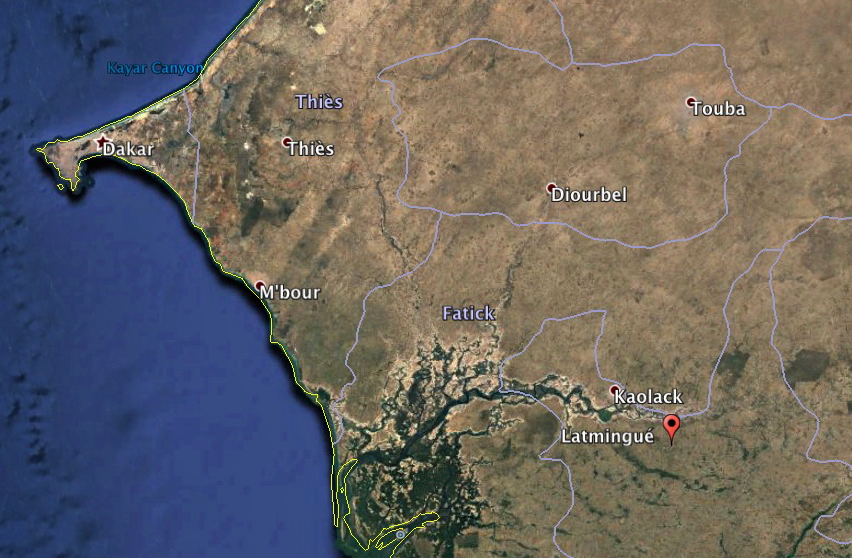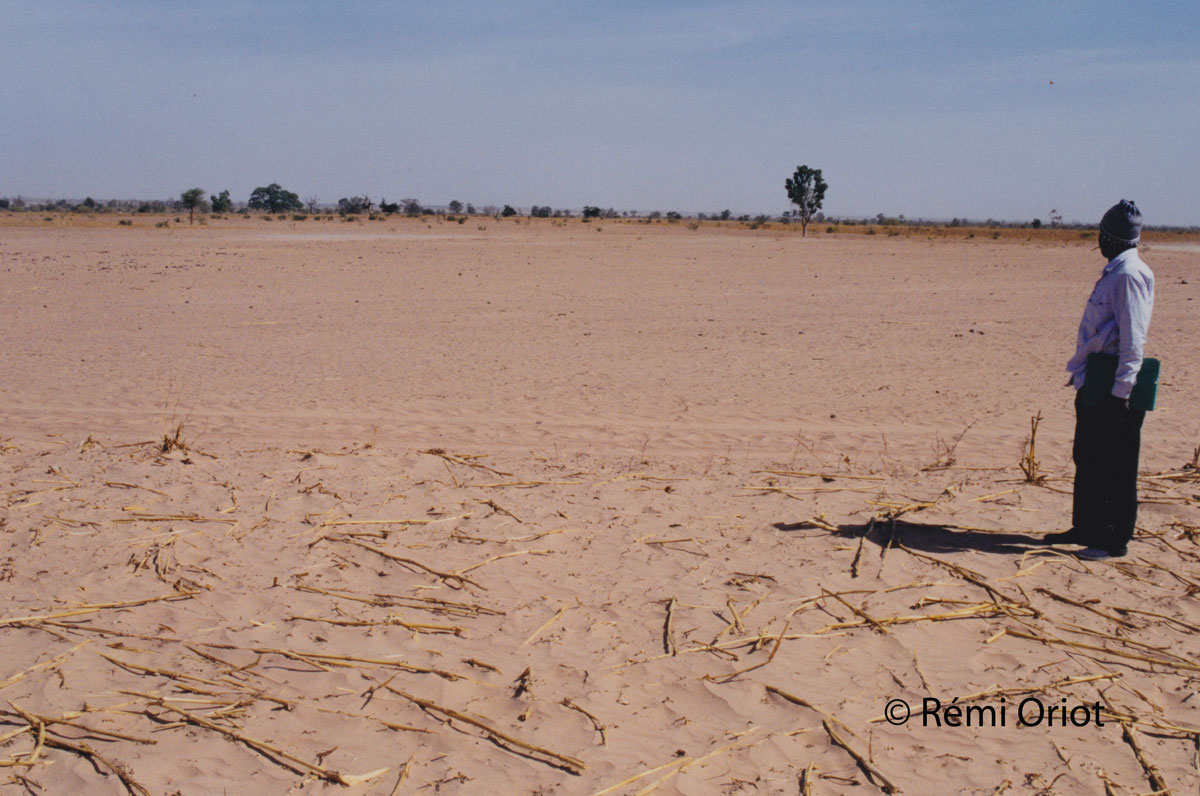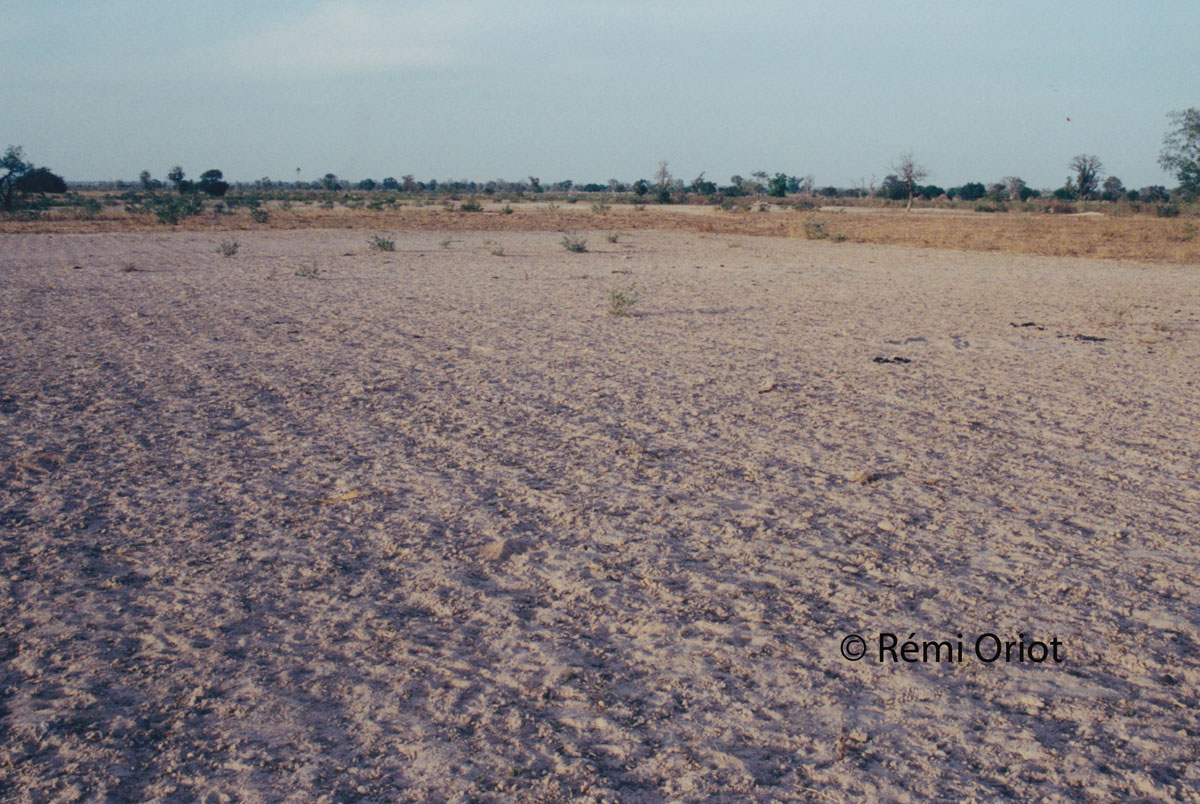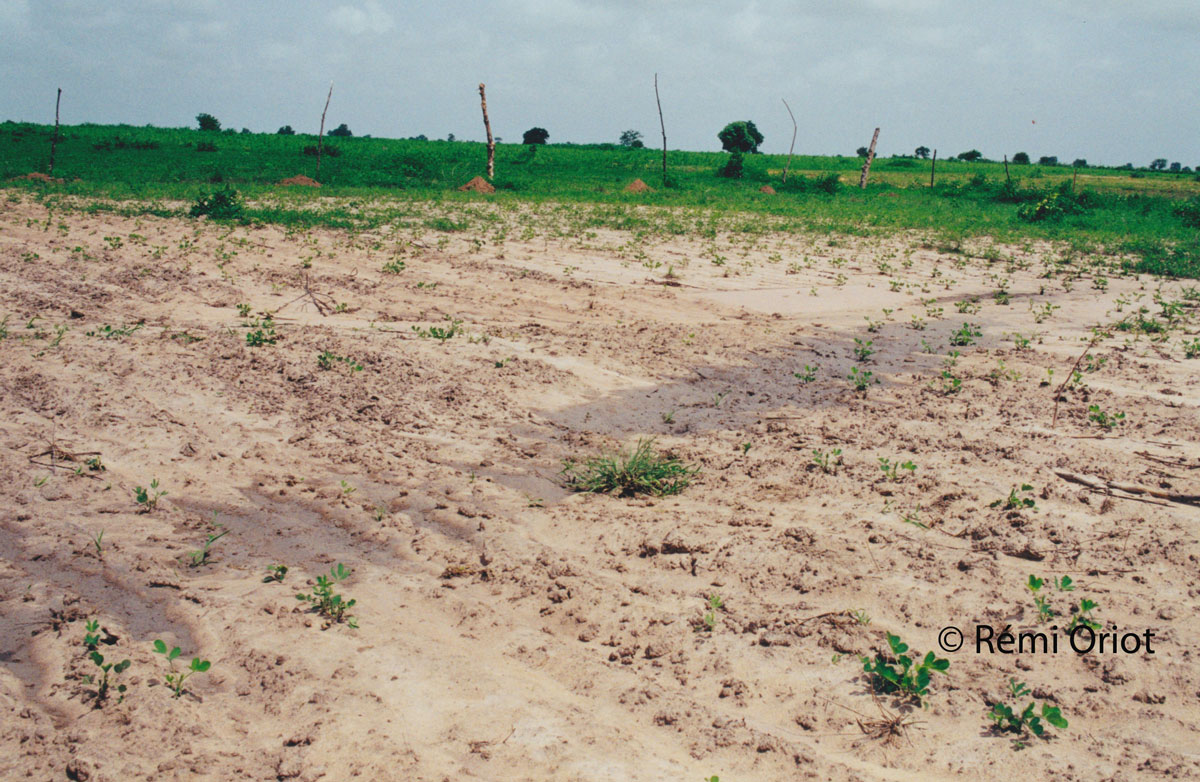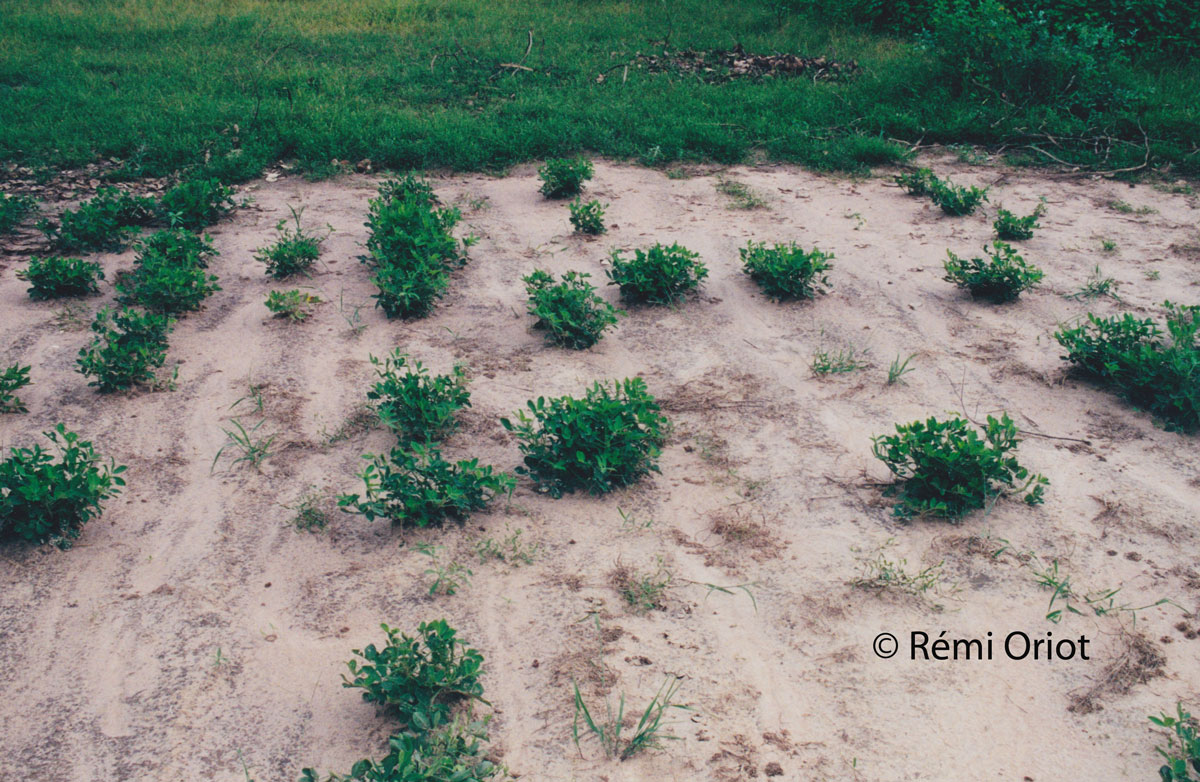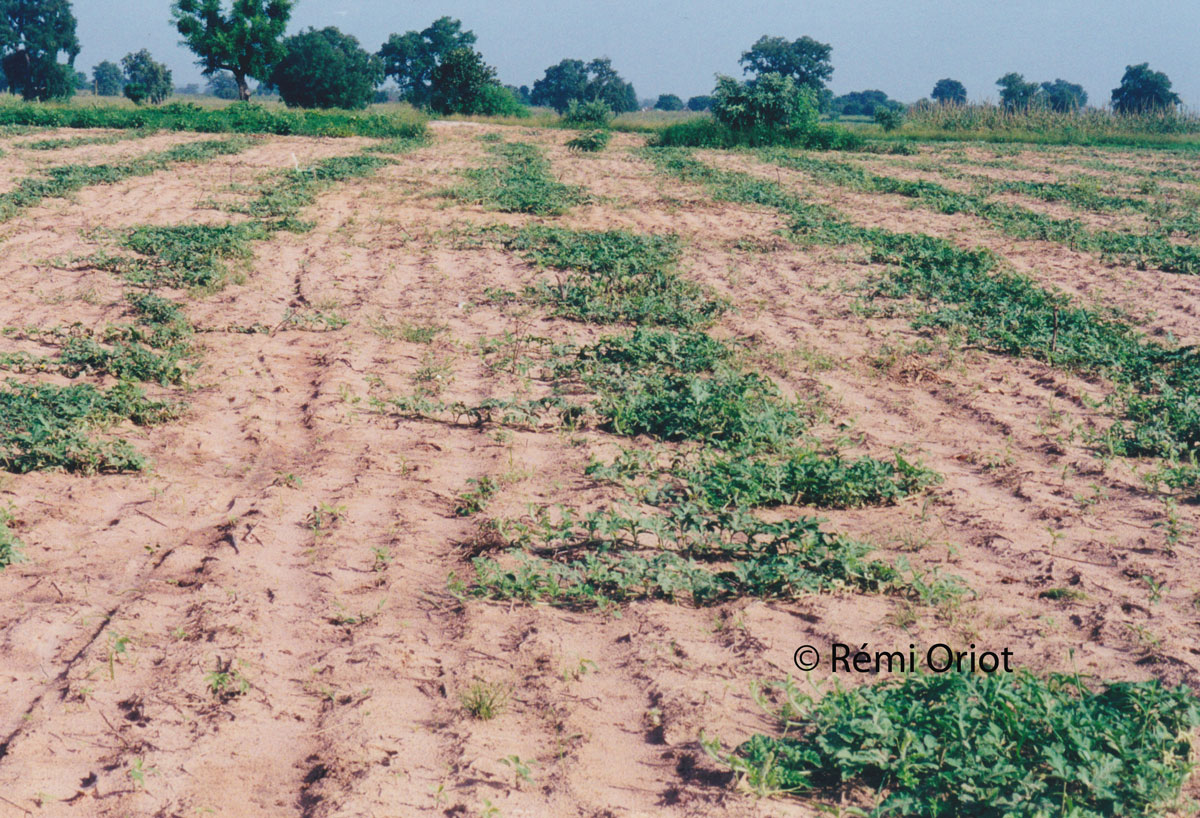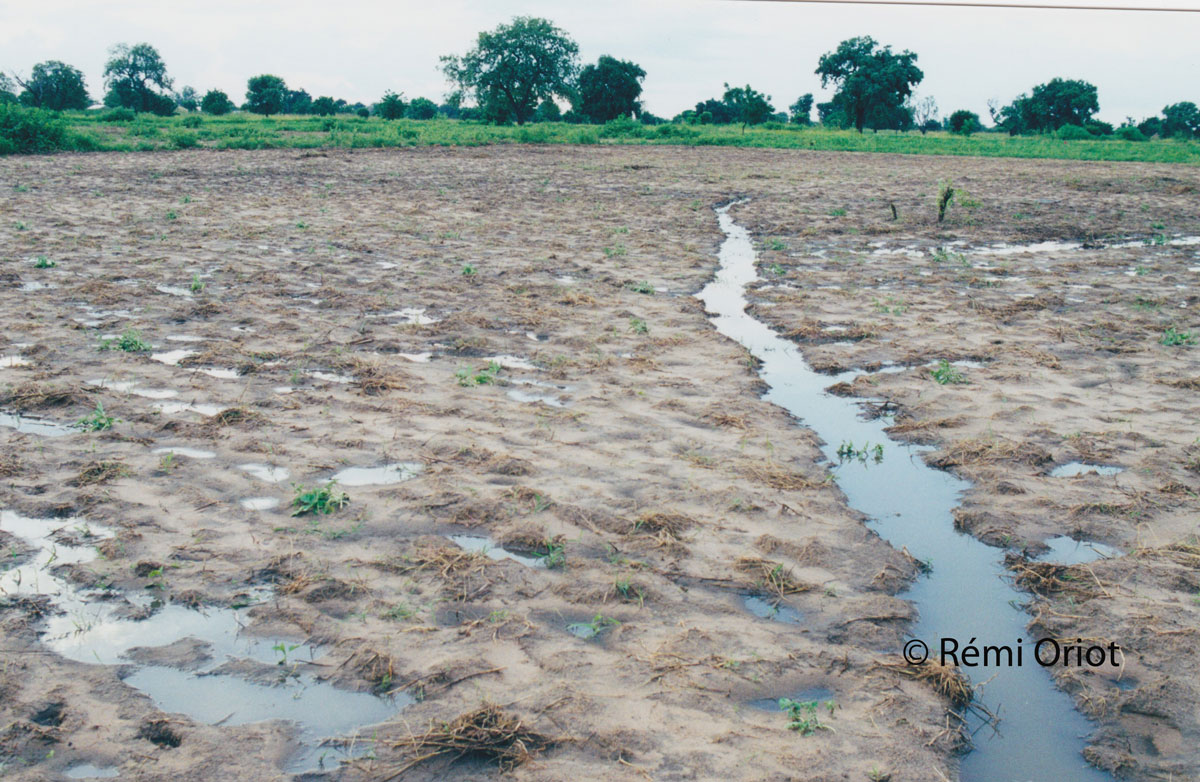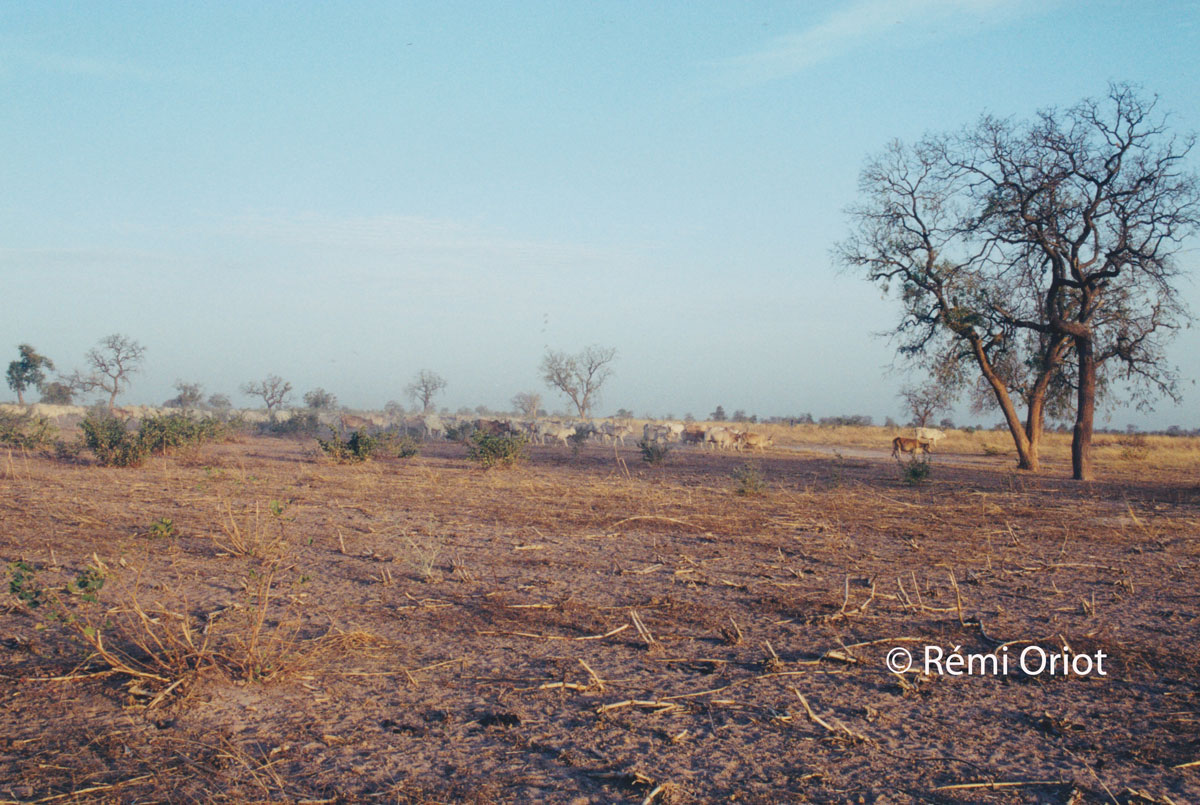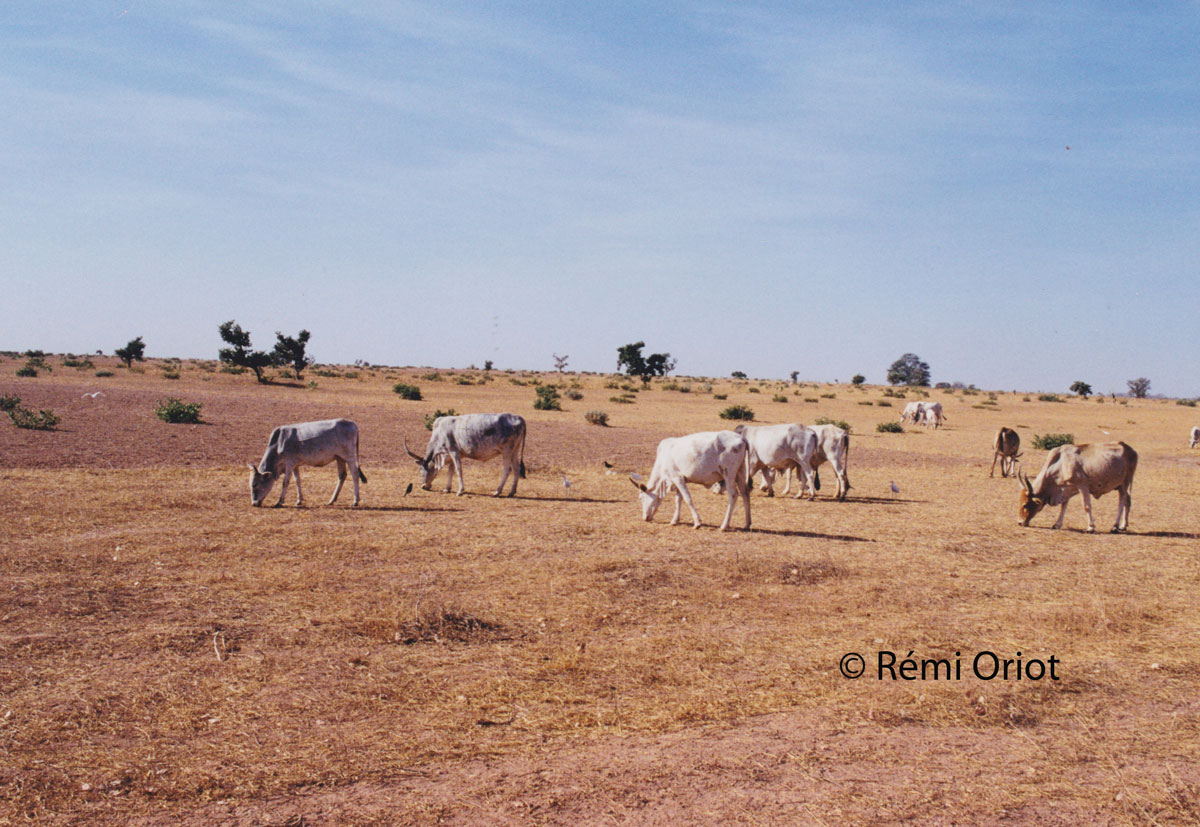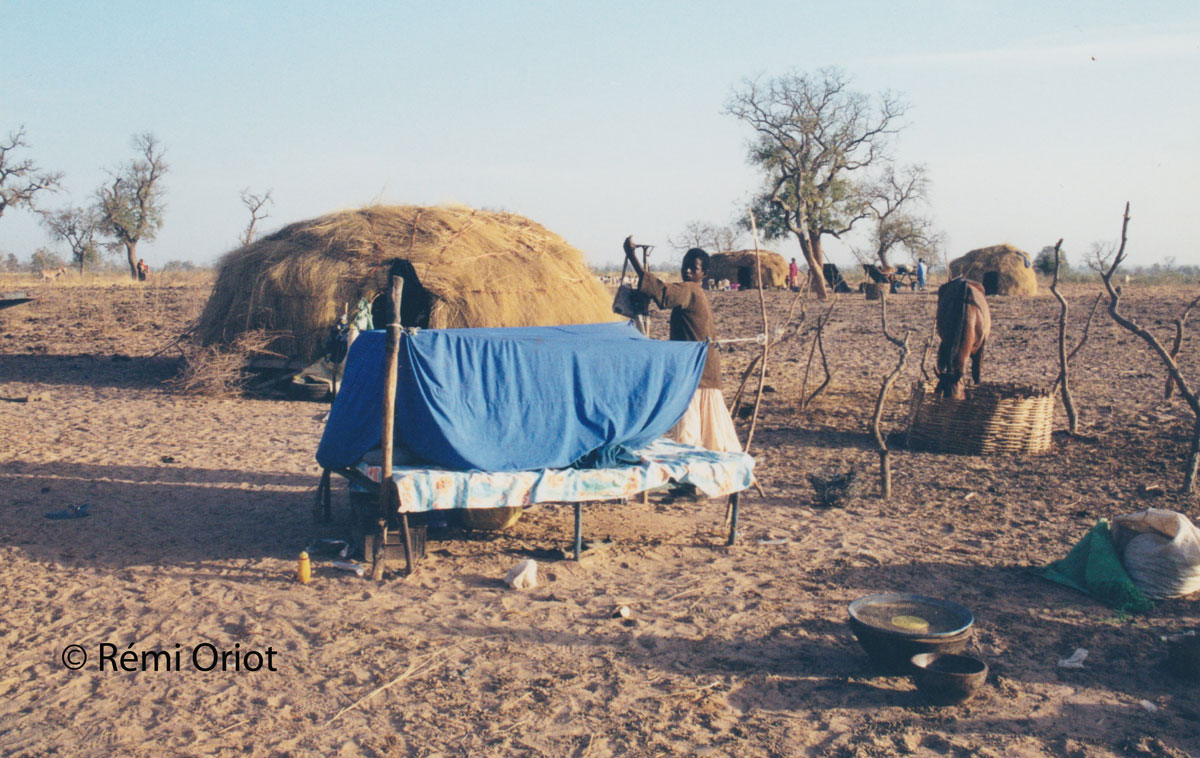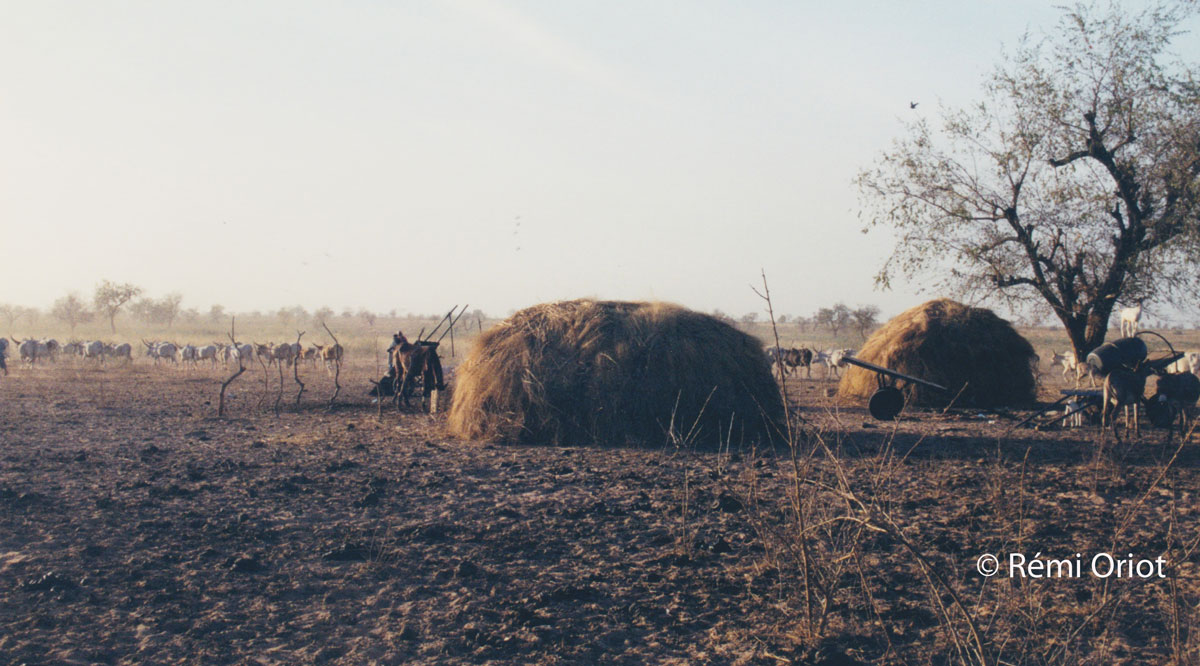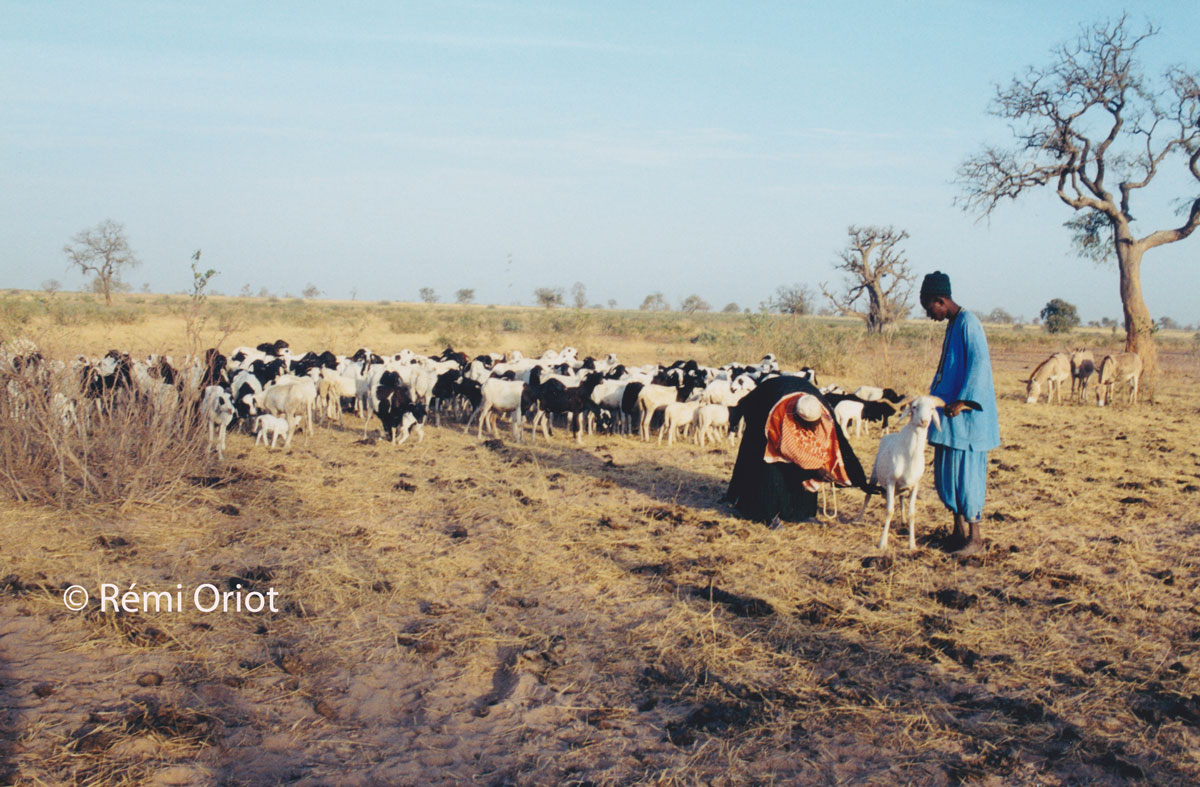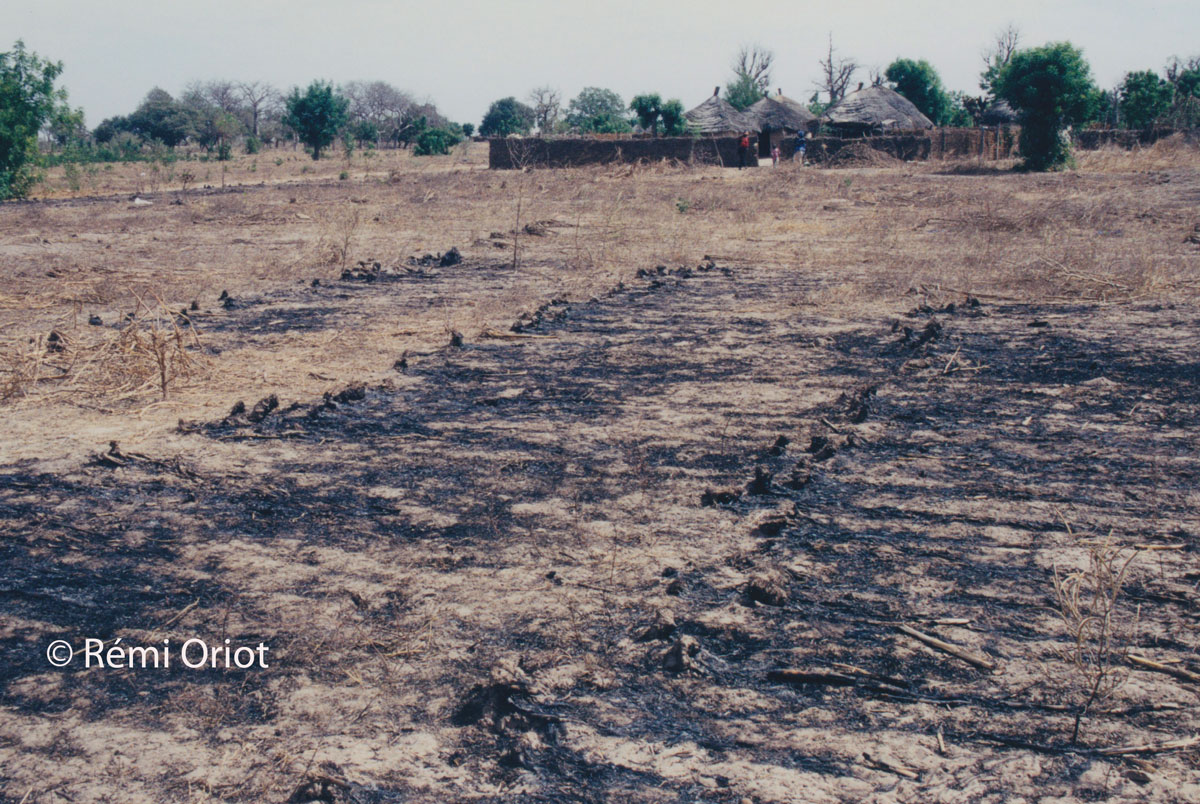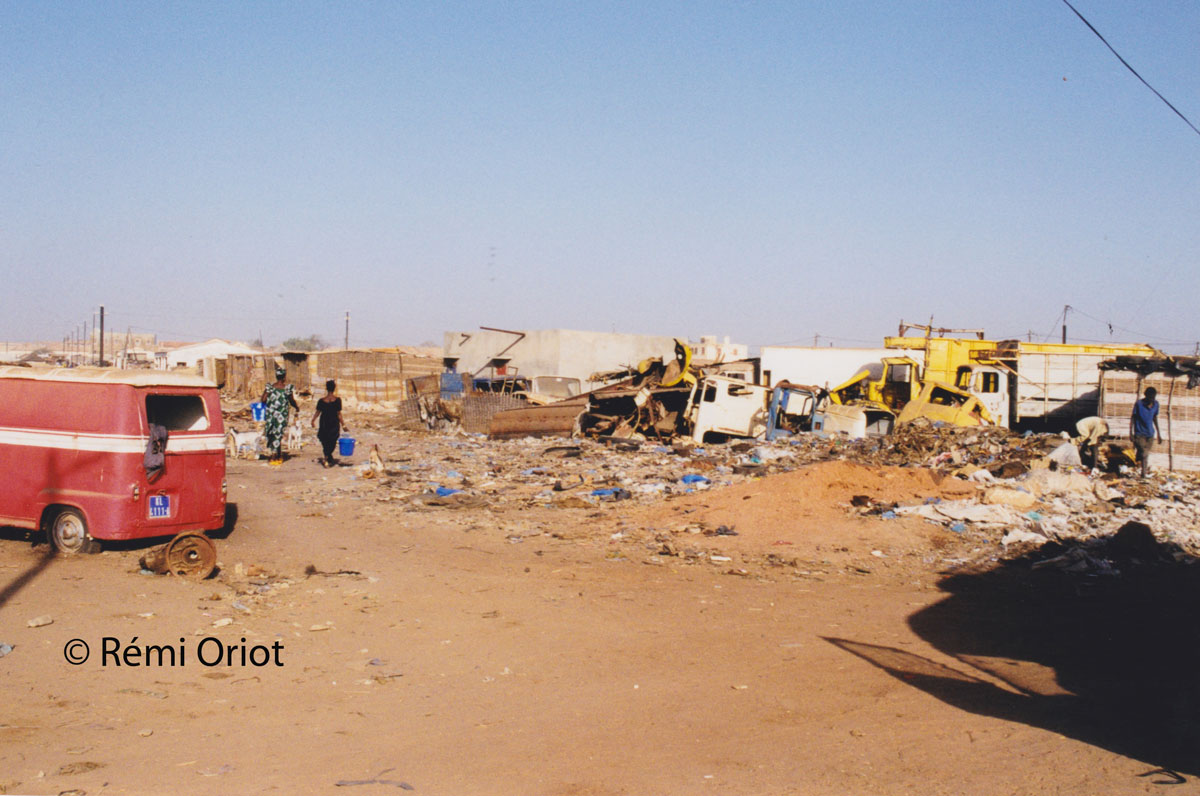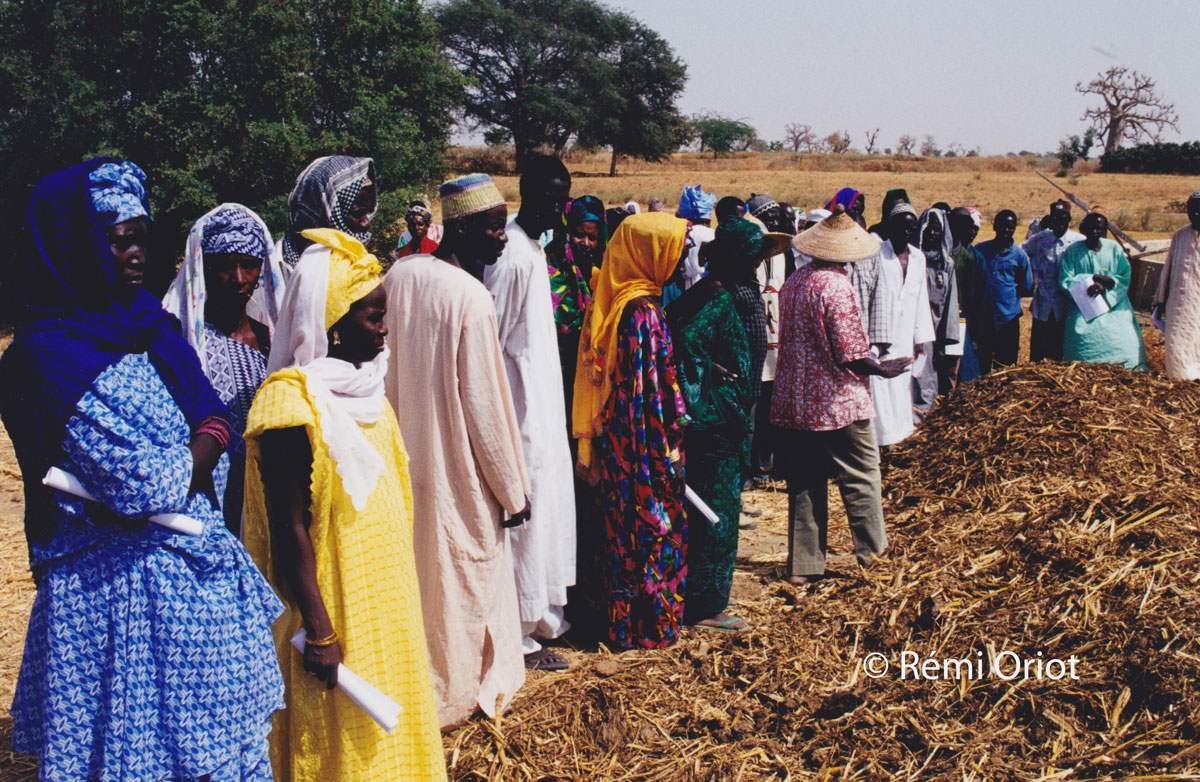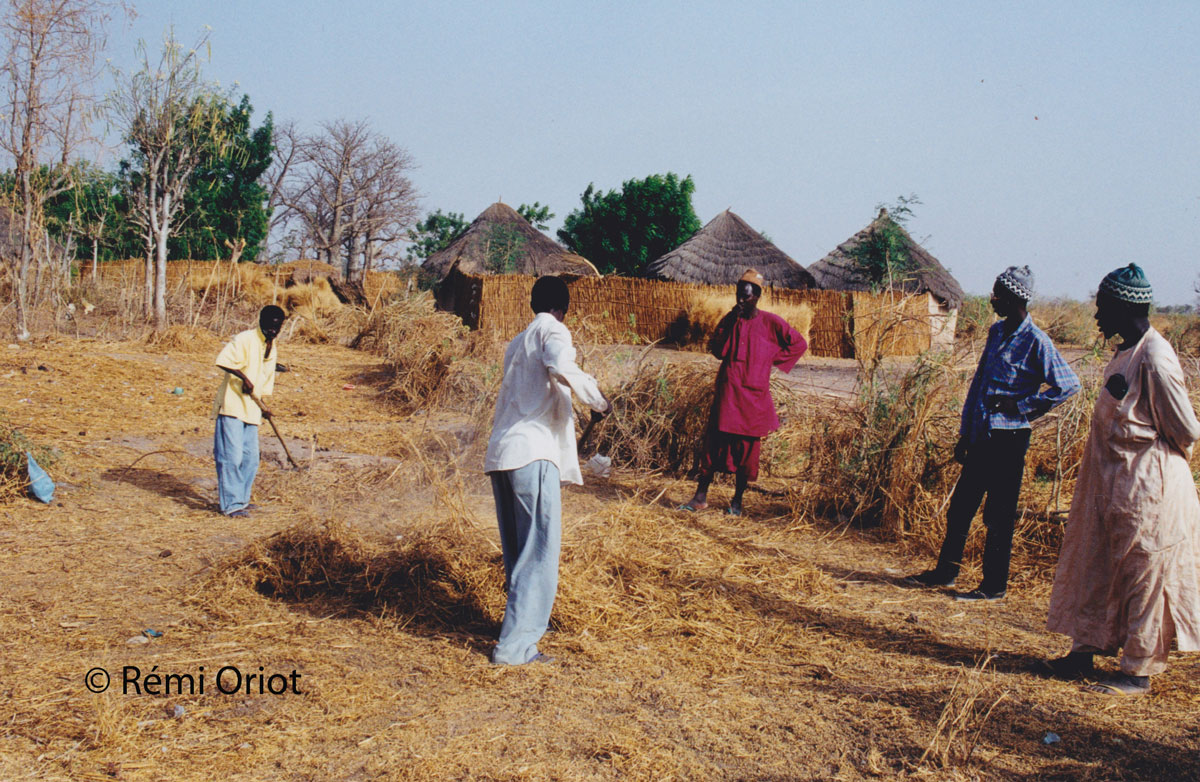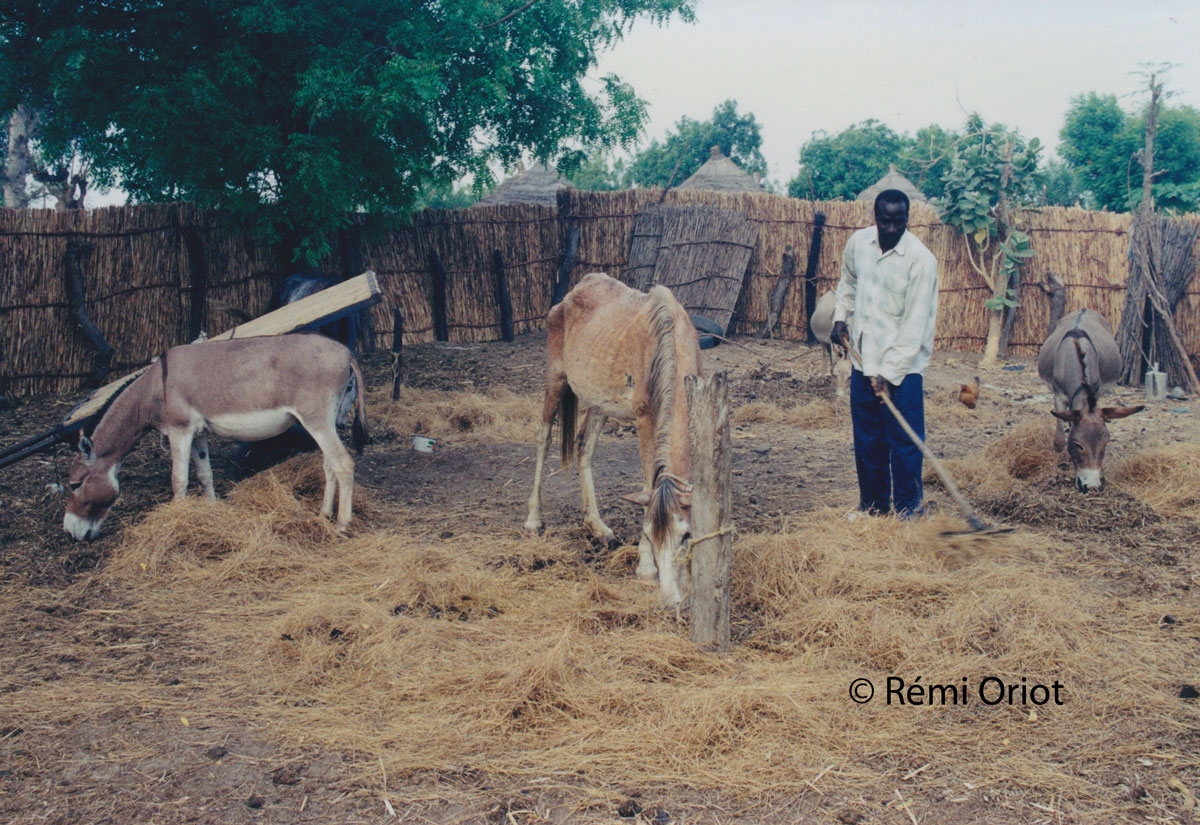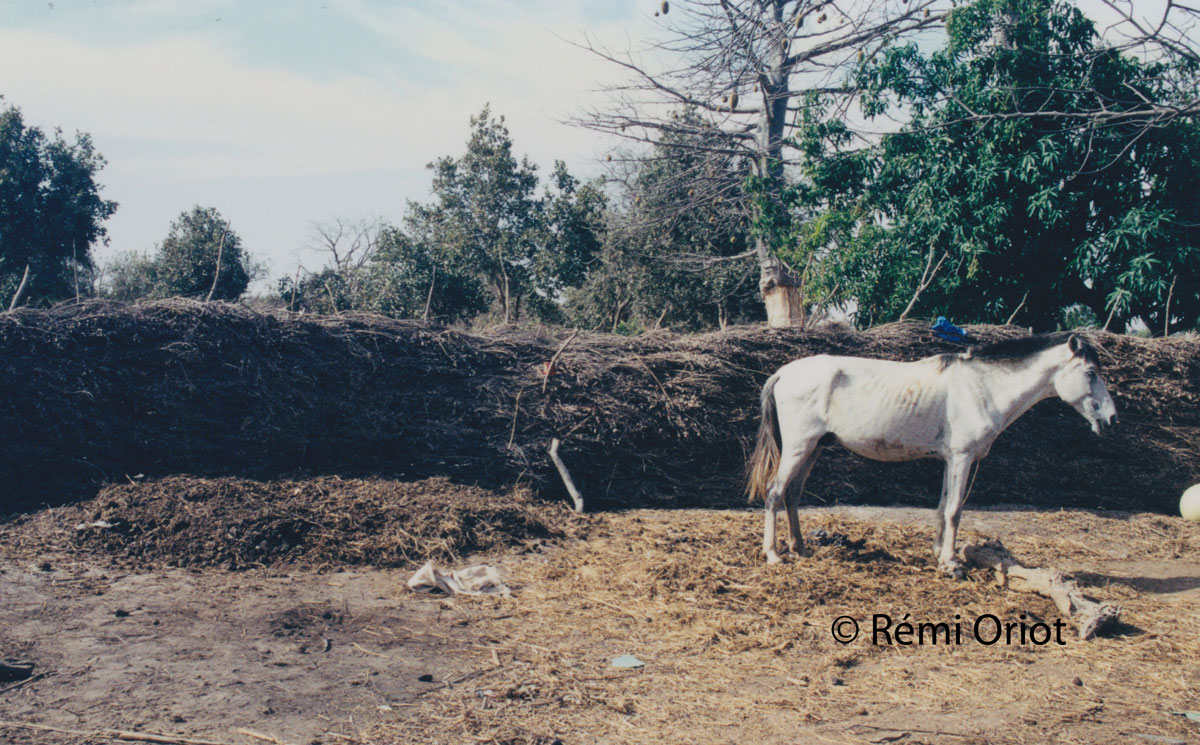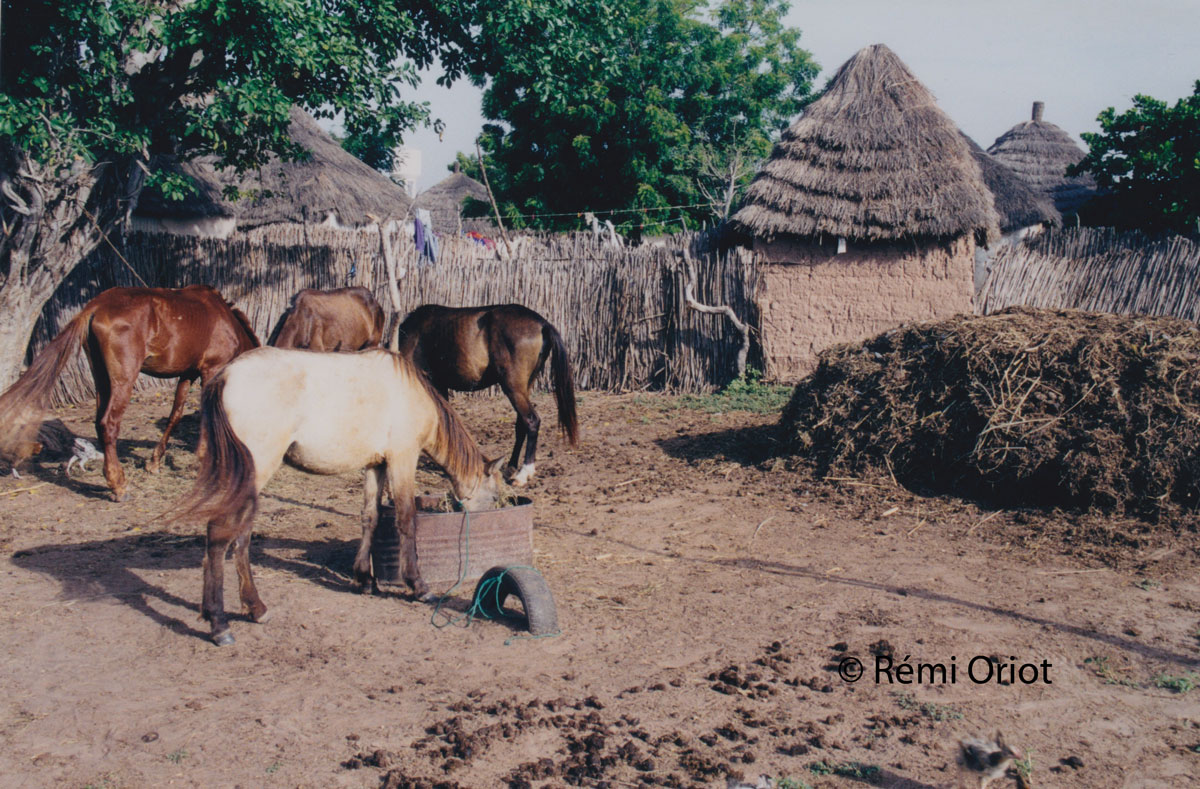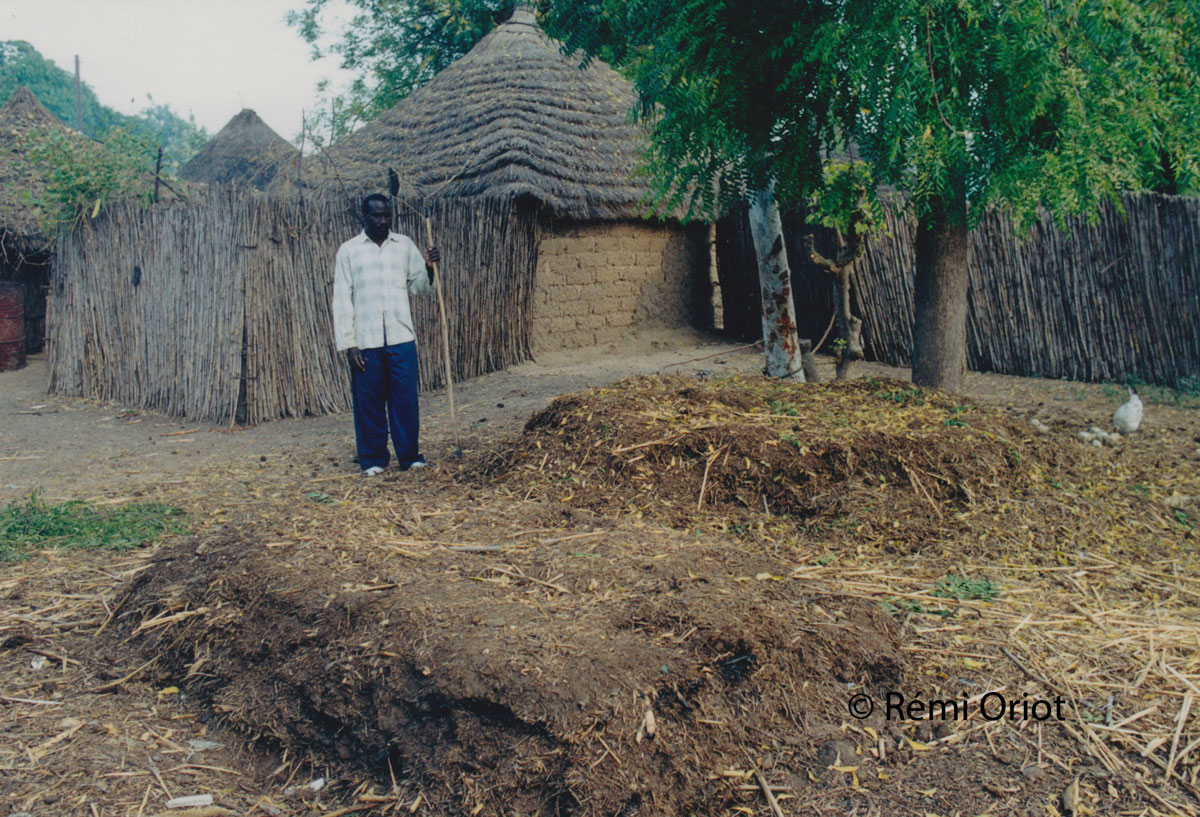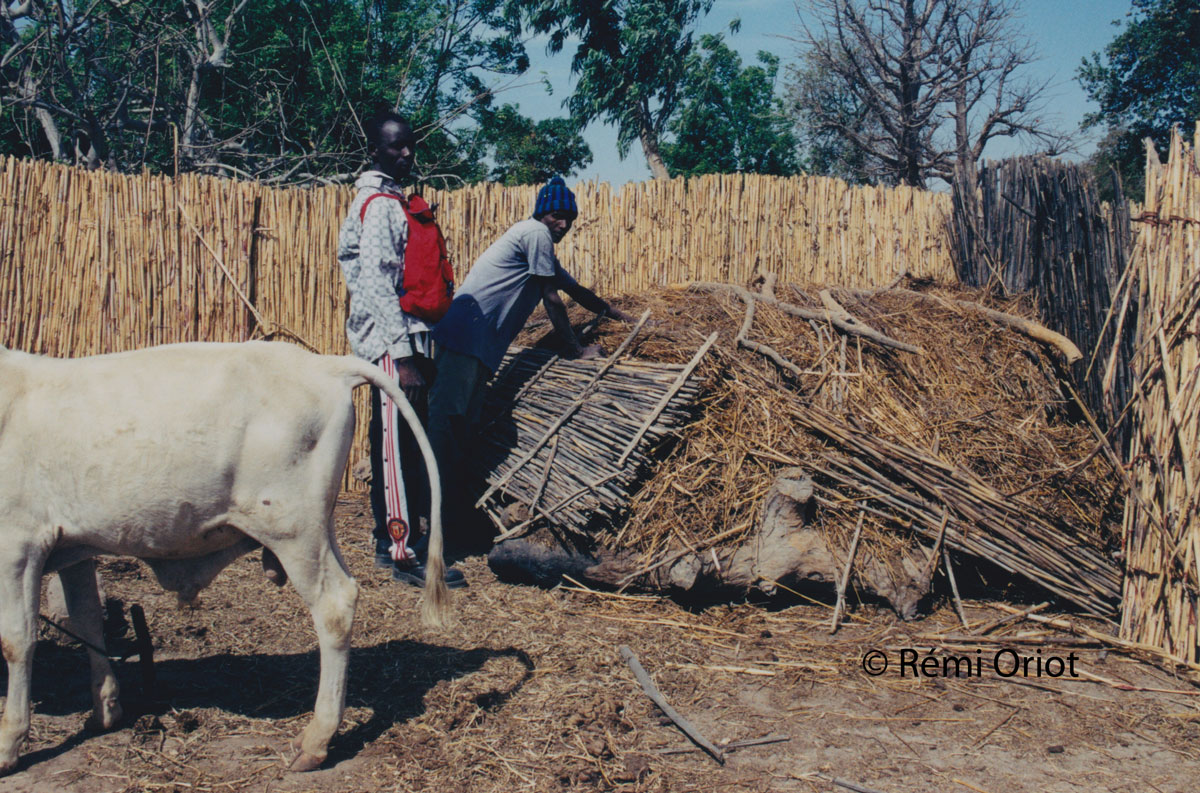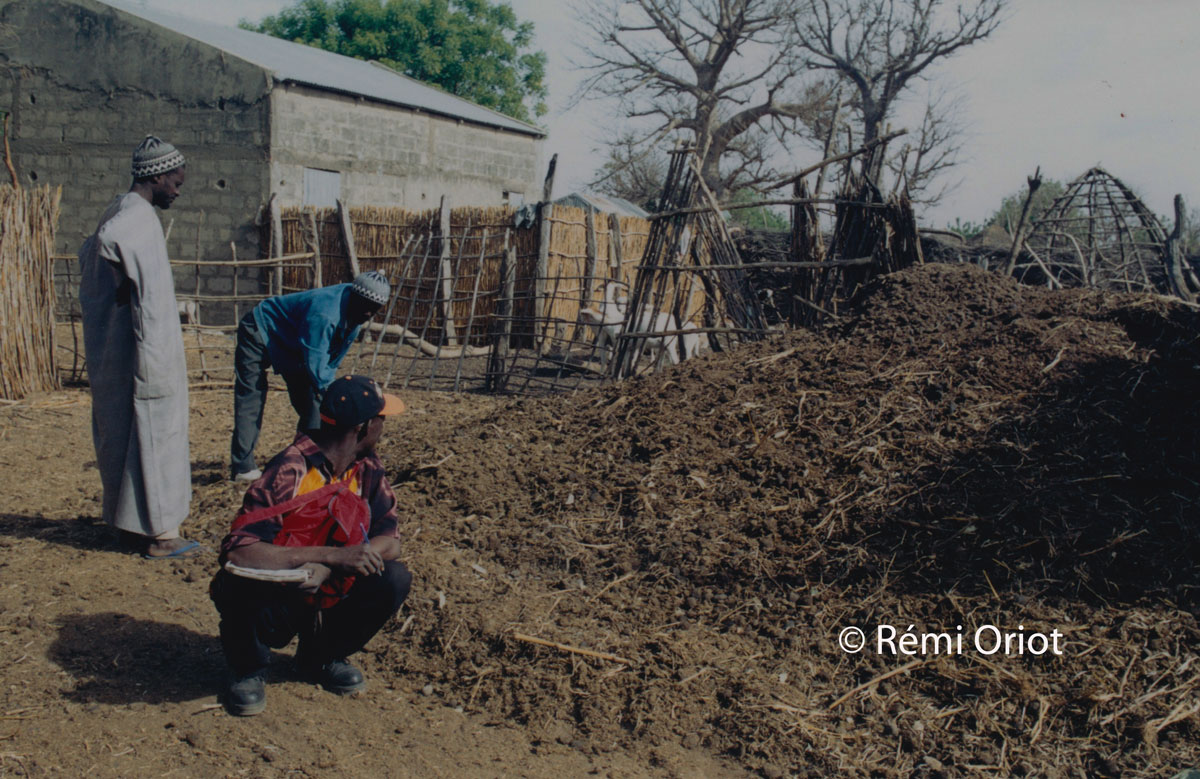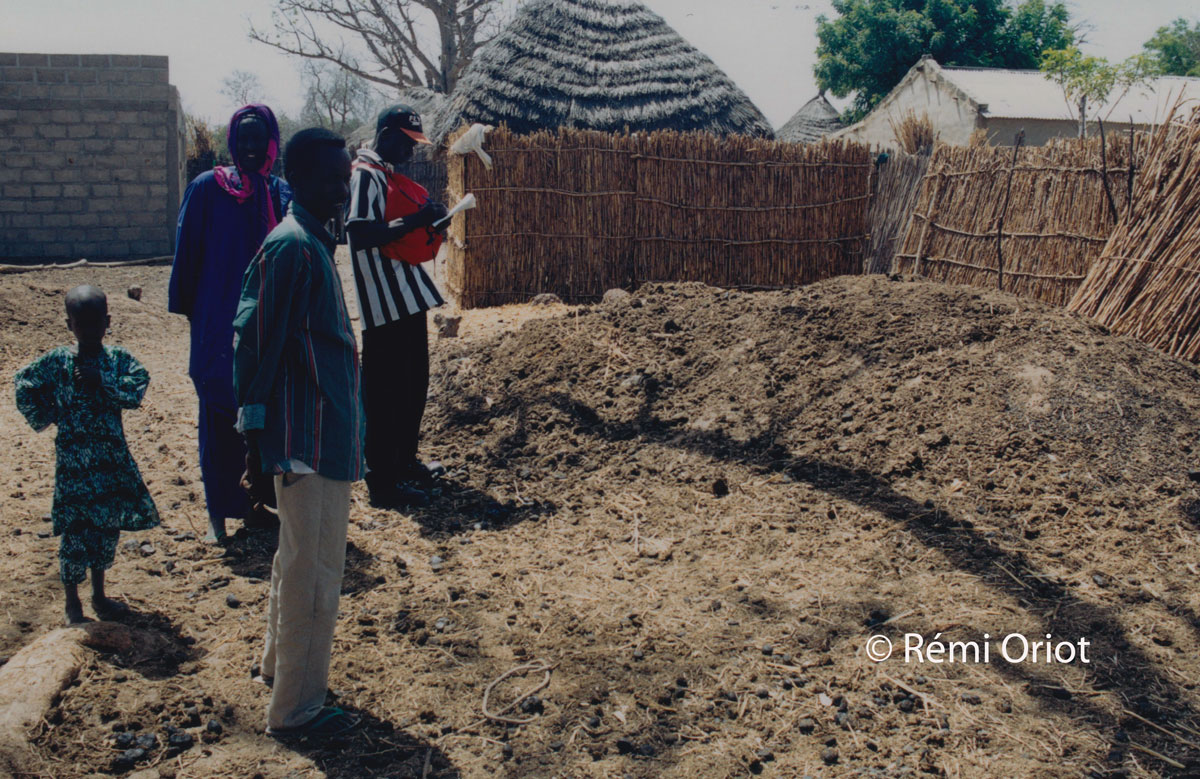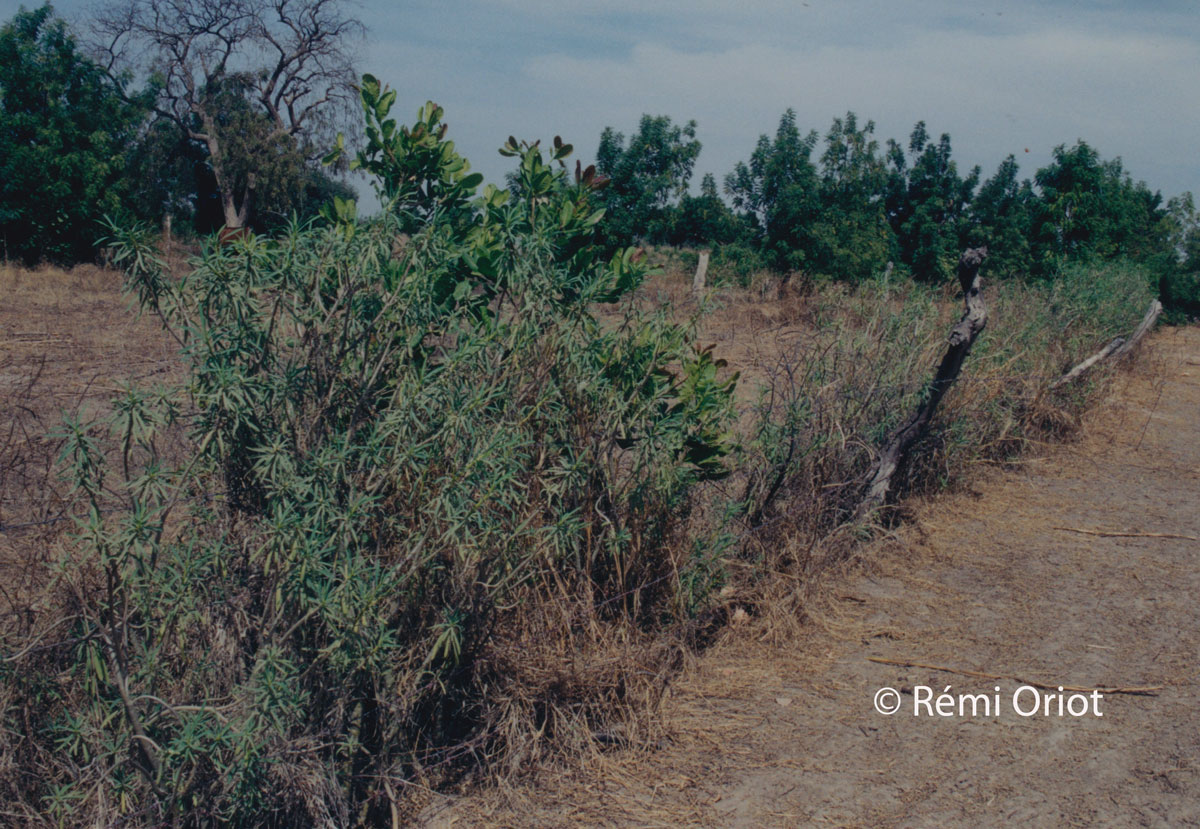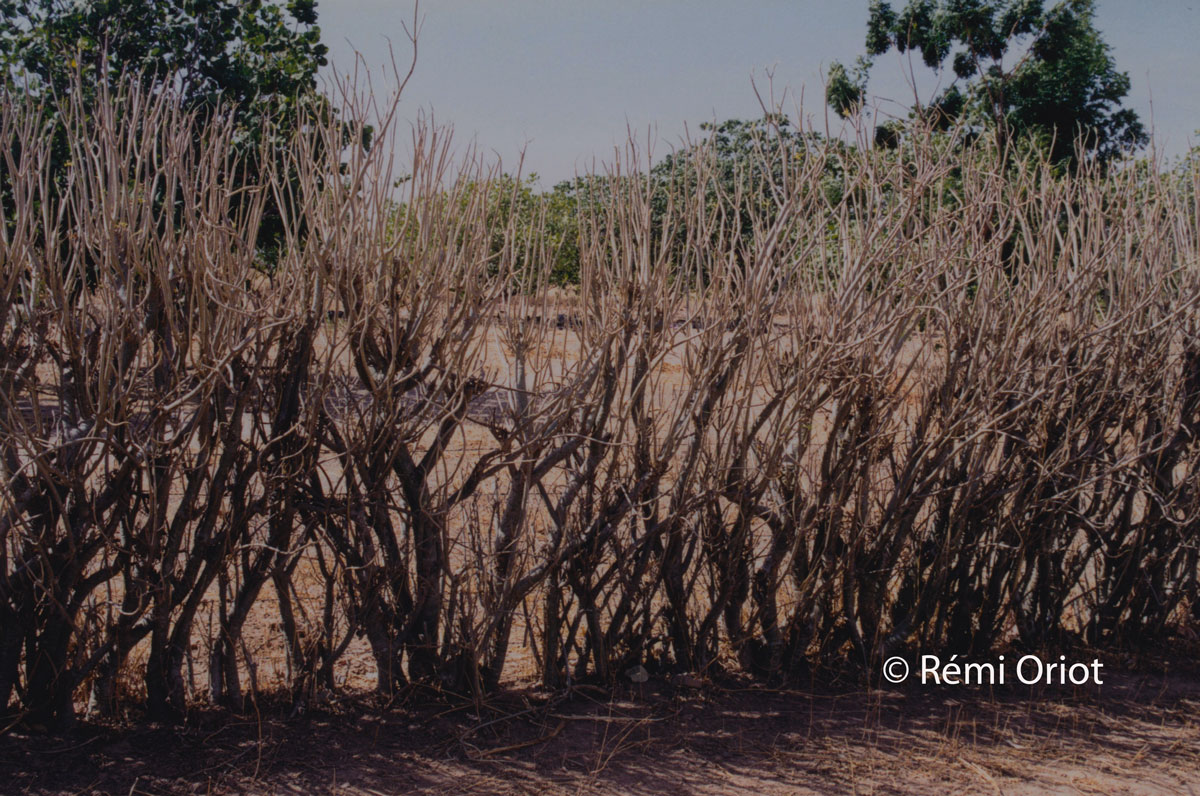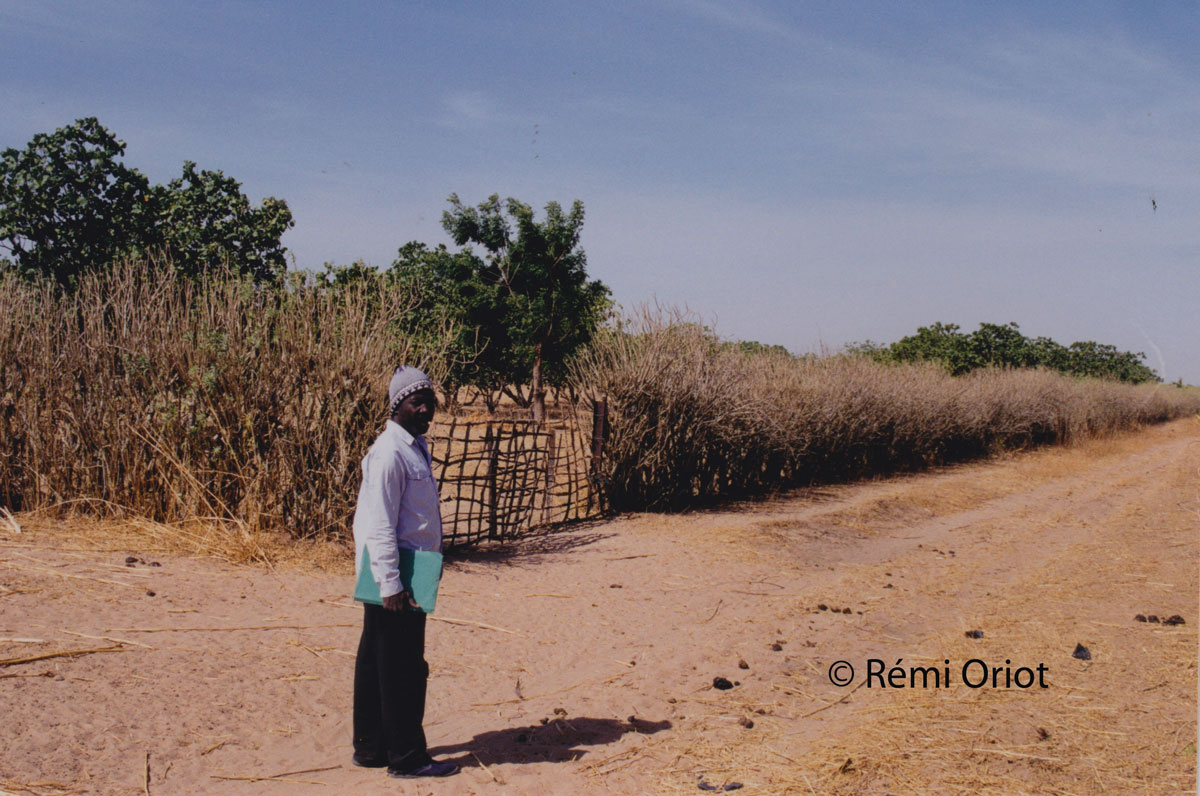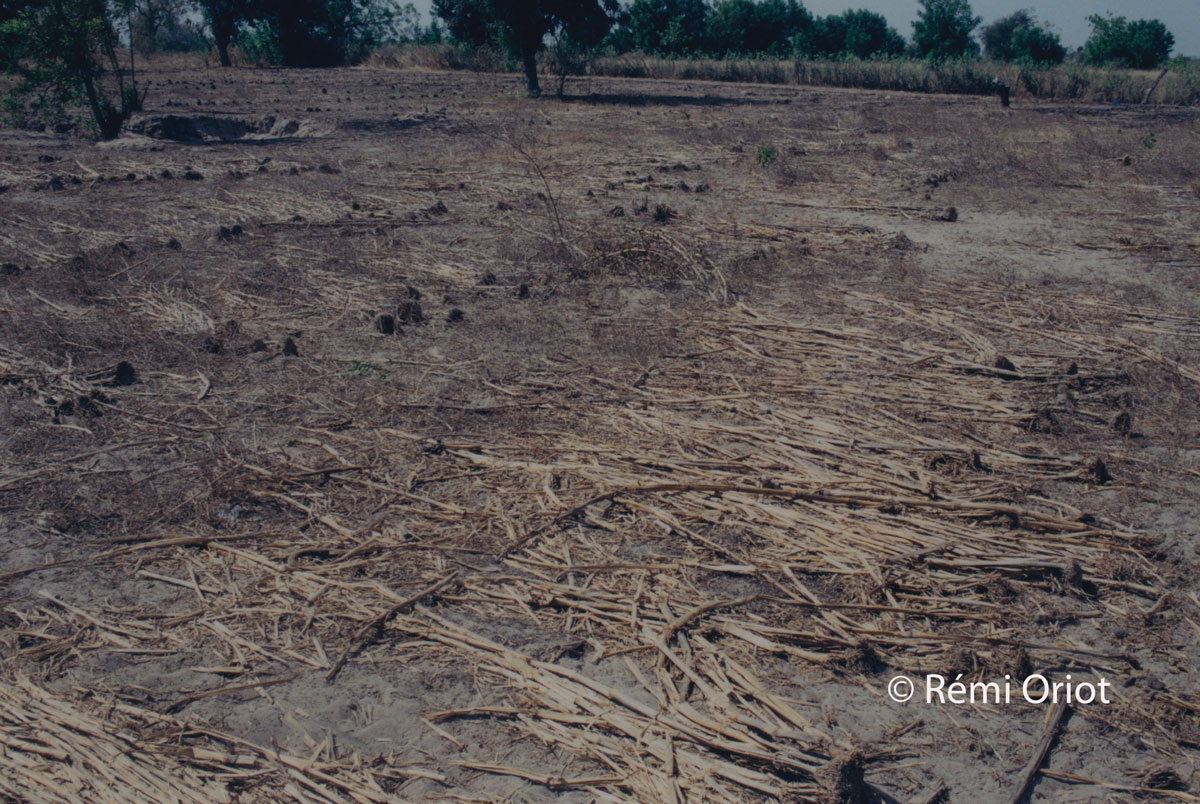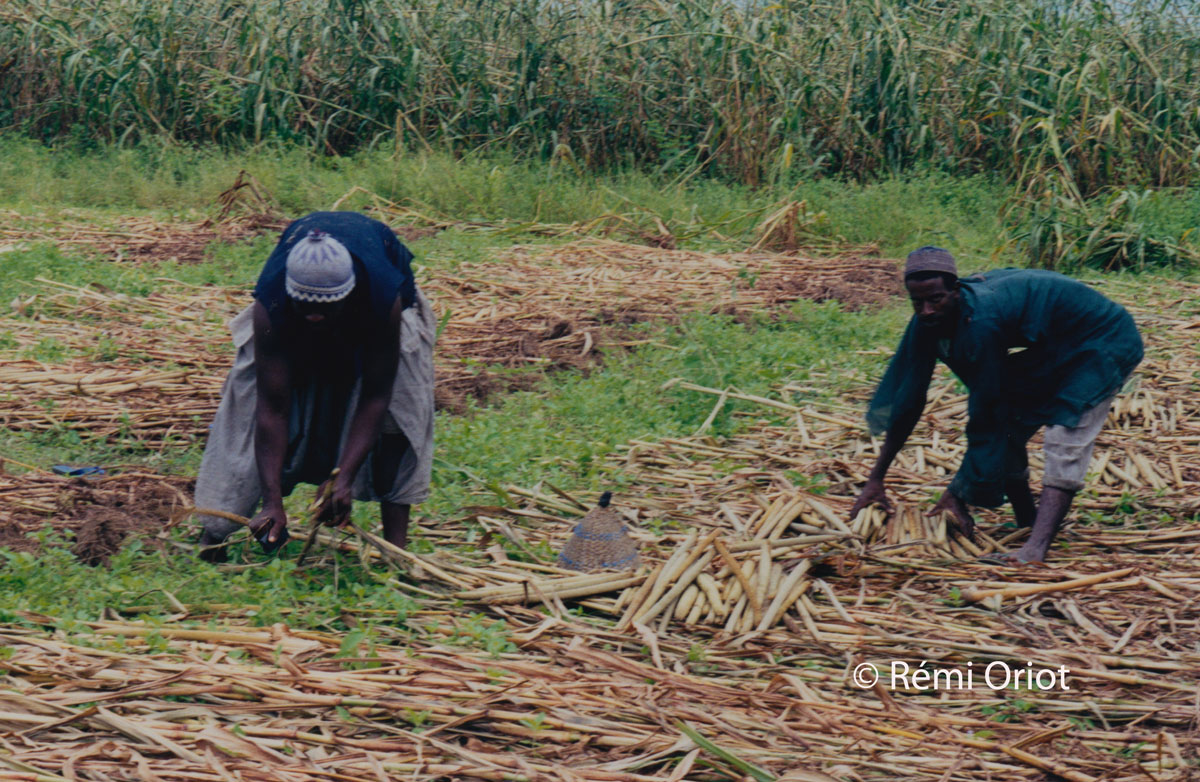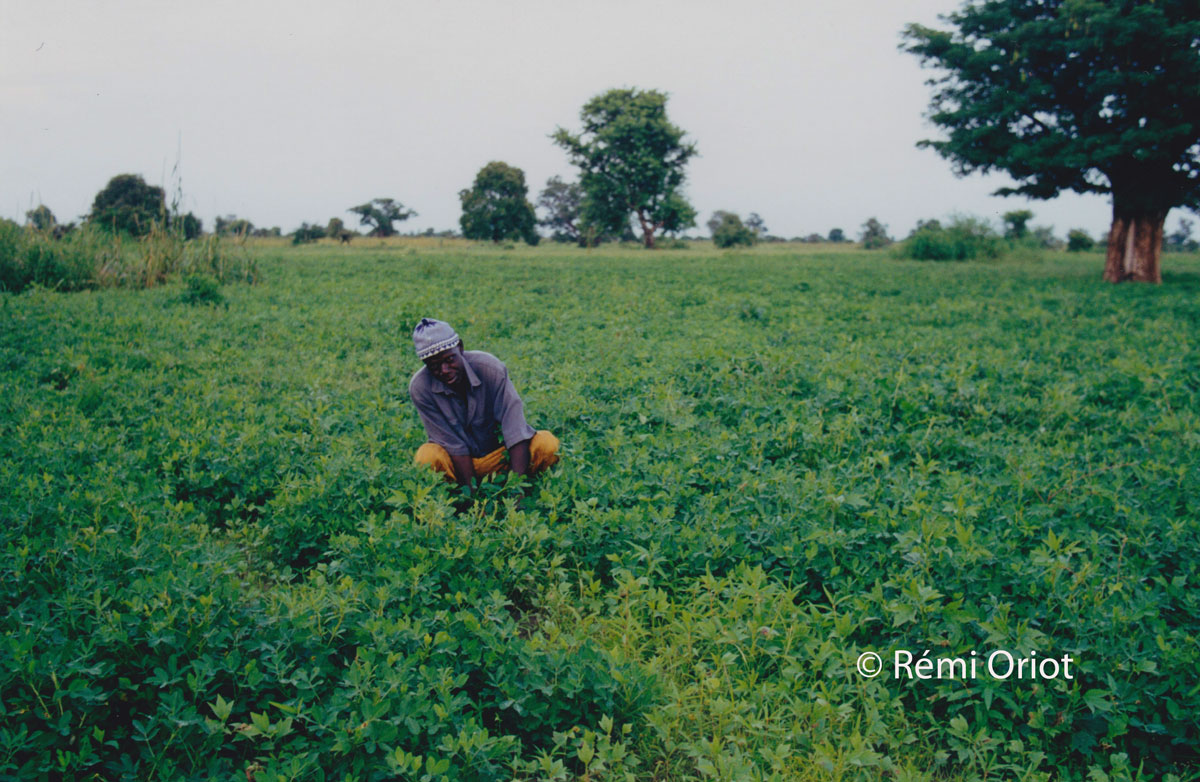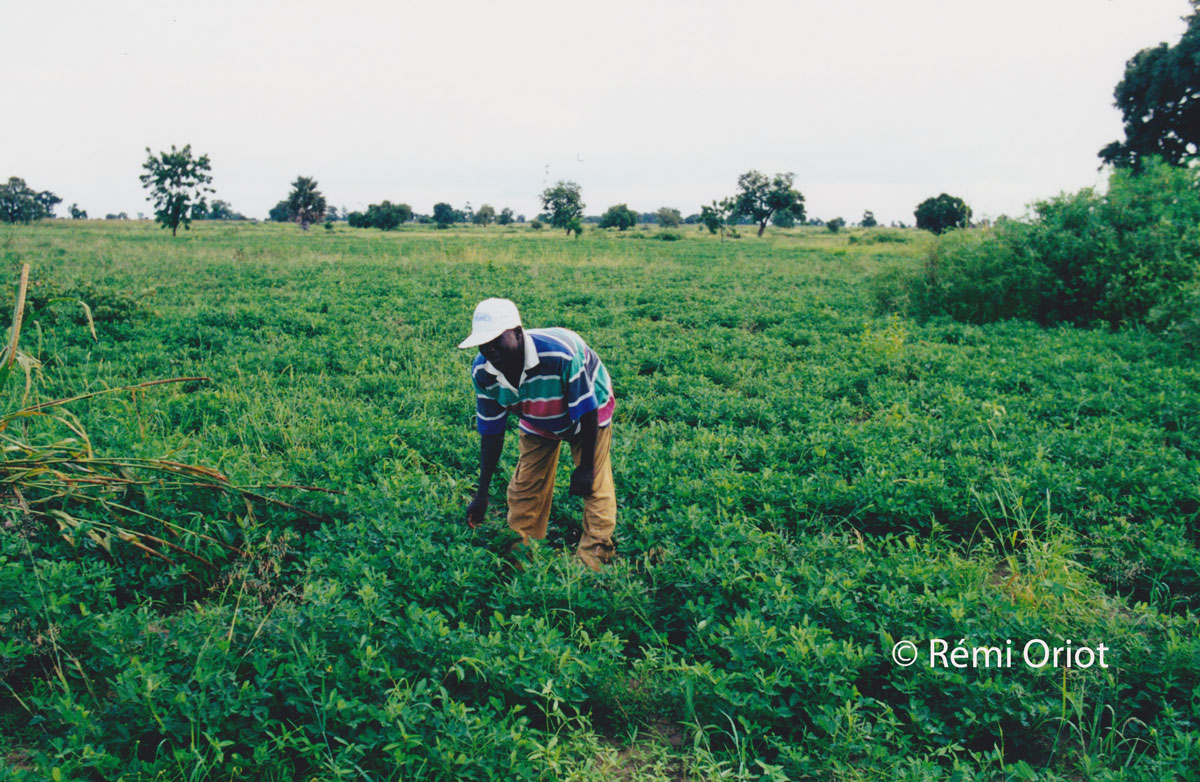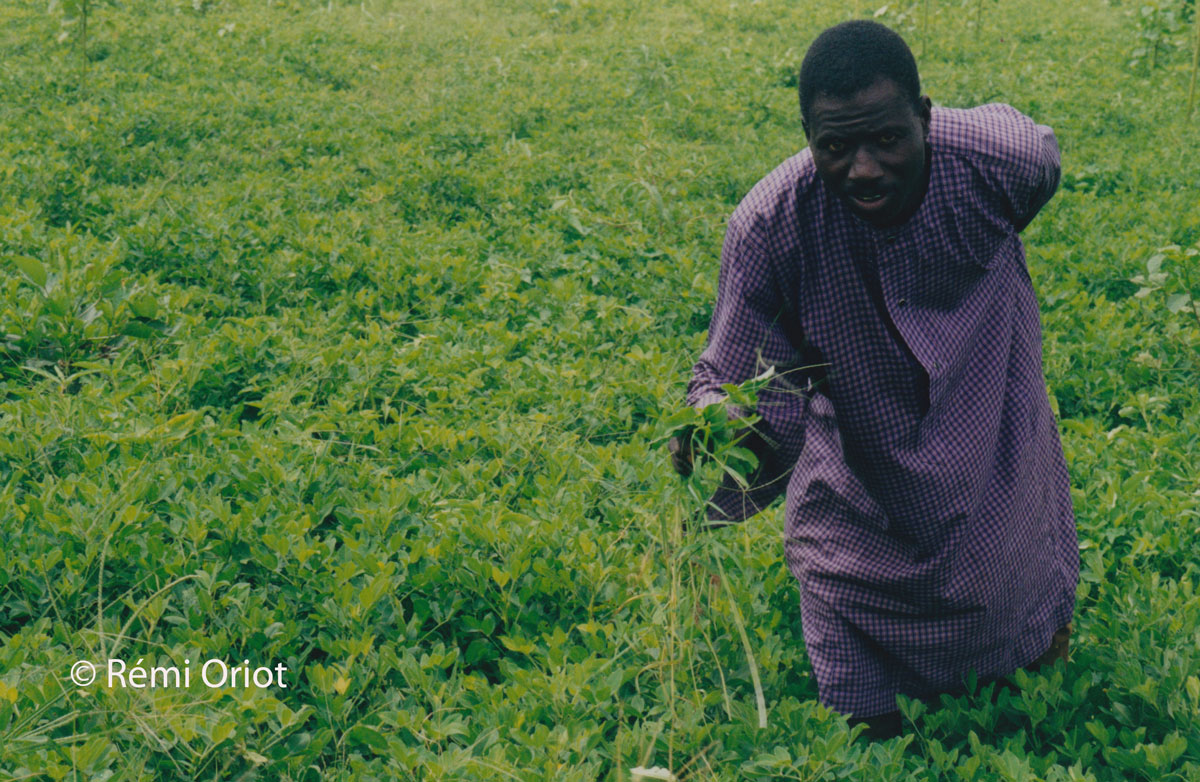When the use of chemicals bring soil infertility
Topics
 Climate smart agriculture,
Climate smart agriculture,
 Communities development
Communities development
Situation
1999 - 2005. Area of Siné Saloun, village of Latmingué, Sénégal.
The sandy soil around Kaolak faced a decline in fertility.
Within a period of 15 years, the peanut production fell from 1 ton/ha to 150 kg/ha.
The area faced a massive rural exodus ; an aging population stayed to cultivate soils that were becoming more and more eroded.
The millet, the basic food of the local population in rotation with peanut, was also affected.
Problem
As part of a programe to boost peanut production and therefore increase the export of peanut oil and therefore export revenue, the State facilitated the access to chemicals for producers, depending on the cultivated surface they had.
To get more chemicals, producers increased their cultivated surface by destroying all the forests, woods, hedges.
The strong wind during the dry season– the Harmattan - no longer encountered obstacles, and therefore started eroding the lands, brooming all the fine clays that kept the land fertile.
Millet production was not enough to feed the families and peanut production created negative results.
Implemented solutions
- Implementation of a pilot programe with 80 families – 800 beneficiaries – members of the association of local producers.
- Training of 3 technical leaders in sustainable agriculture.
- Implementation of fertilisation based on decomposed organic matter.
- Implementation of agroforestry with Acacia biloba in the most eroded plots.
- Restoration of breakwinds.
- Work with a development partner to pay the 3 technicians.
Results
- Increase of the yields within 5 years, from 150 to 900 kg/ha.
- The yields never fell, even when the rain stopped for 17 days during the rainy period in 2003, just when the grains were forming. The compost in soil was like a sponge, able to retain the water from the last rain and to distribute it after to the plants.
- The programme became independent the fifth year : producers were able to pay the technicians directly.
- Neigbouring producers copied the sustainable technics.

